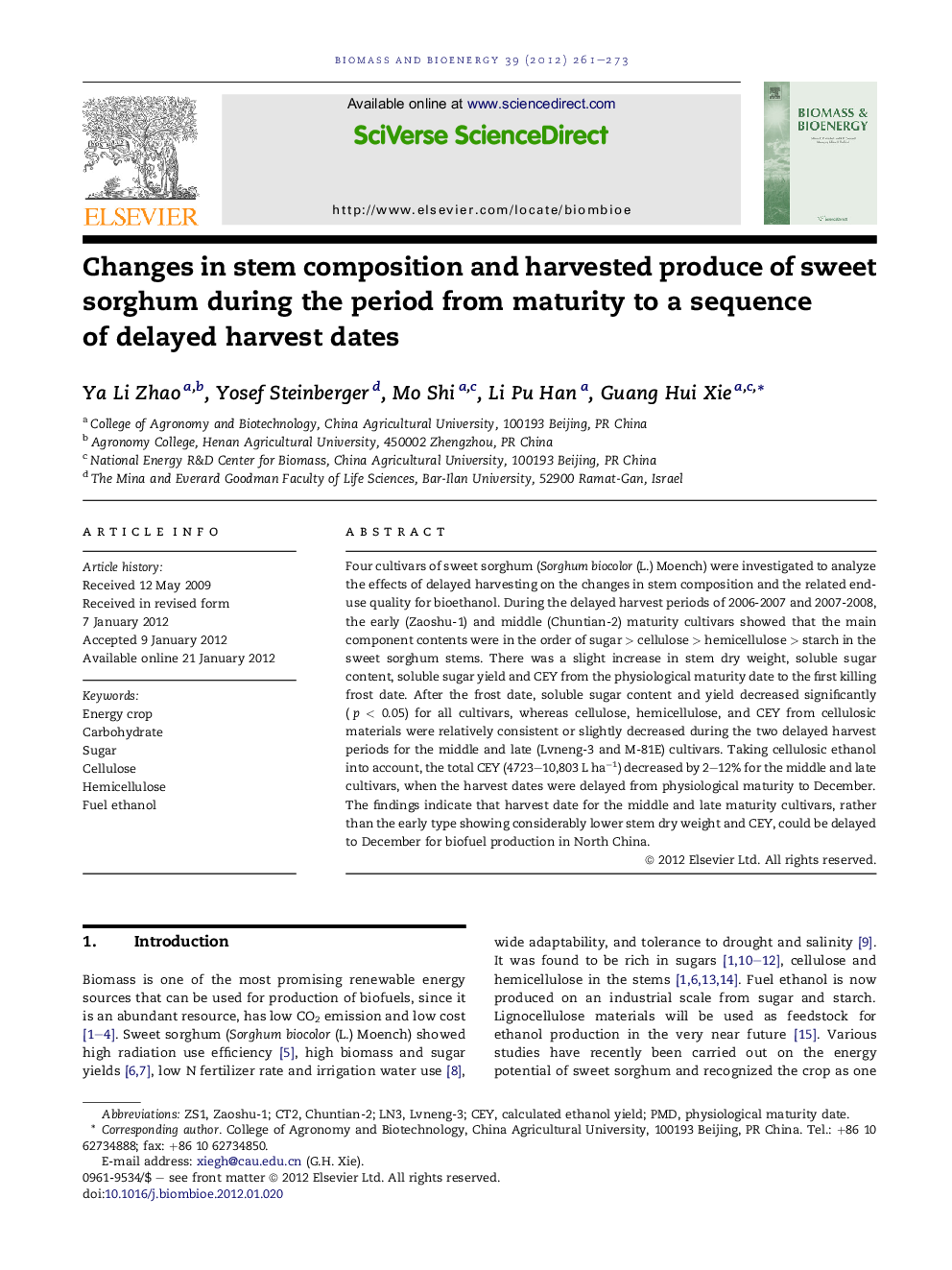| Article ID | Journal | Published Year | Pages | File Type |
|---|---|---|---|---|
| 677509 | Biomass and Bioenergy | 2012 | 13 Pages |
Four cultivars of sweet sorghum (Sorghum biocolor (L.) Moench) were investigated to analyze the effects of delayed harvesting on the changes in stem composition and the related end-use quality for bioethanol. During the delayed harvest periods of 2006-2007 and 2007-2008, the early (Zaoshu-1) and middle (Chuntian-2) maturity cultivars showed that the main component contents were in the order of sugar > cellulose > hemicellulose > starch in the sweet sorghum stems. There was a slight increase in stem dry weight, soluble sugar content, soluble sugar yield and CEY from the physiological maturity date to the first killing frost date. After the frost date, soluble sugar content and yield decreased significantly (p < 0.05) for all cultivars, whereas cellulose, hemicellulose, and CEY from cellulosic materials were relatively consistent or slightly decreased during the two delayed harvest periods for the middle and late (Lvneng-3 and M-81E) cultivars. Taking cellulosic ethanol into account, the total CEY (4723–10,803 L ha−1) decreased by 2–12% for the middle and late cultivars, when the harvest dates were delayed from physiological maturity to December. The findings indicate that harvest date for the middle and late maturity cultivars, rather than the early type showing considerably lower stem dry weight and CEY, could be delayed to December for biofuel production in North China.
► Main component contents were in the order of sugar > cellulose > hemicellulose > starch. ► Dry weight and soluble sugar slightly increased from physiological maturity to frost date. ► After frost date sugar decreased and cellulose and hemicellulose were relatively consistent. ► Harvest date could to be delayed to December for middle and late maturity cultivars.
